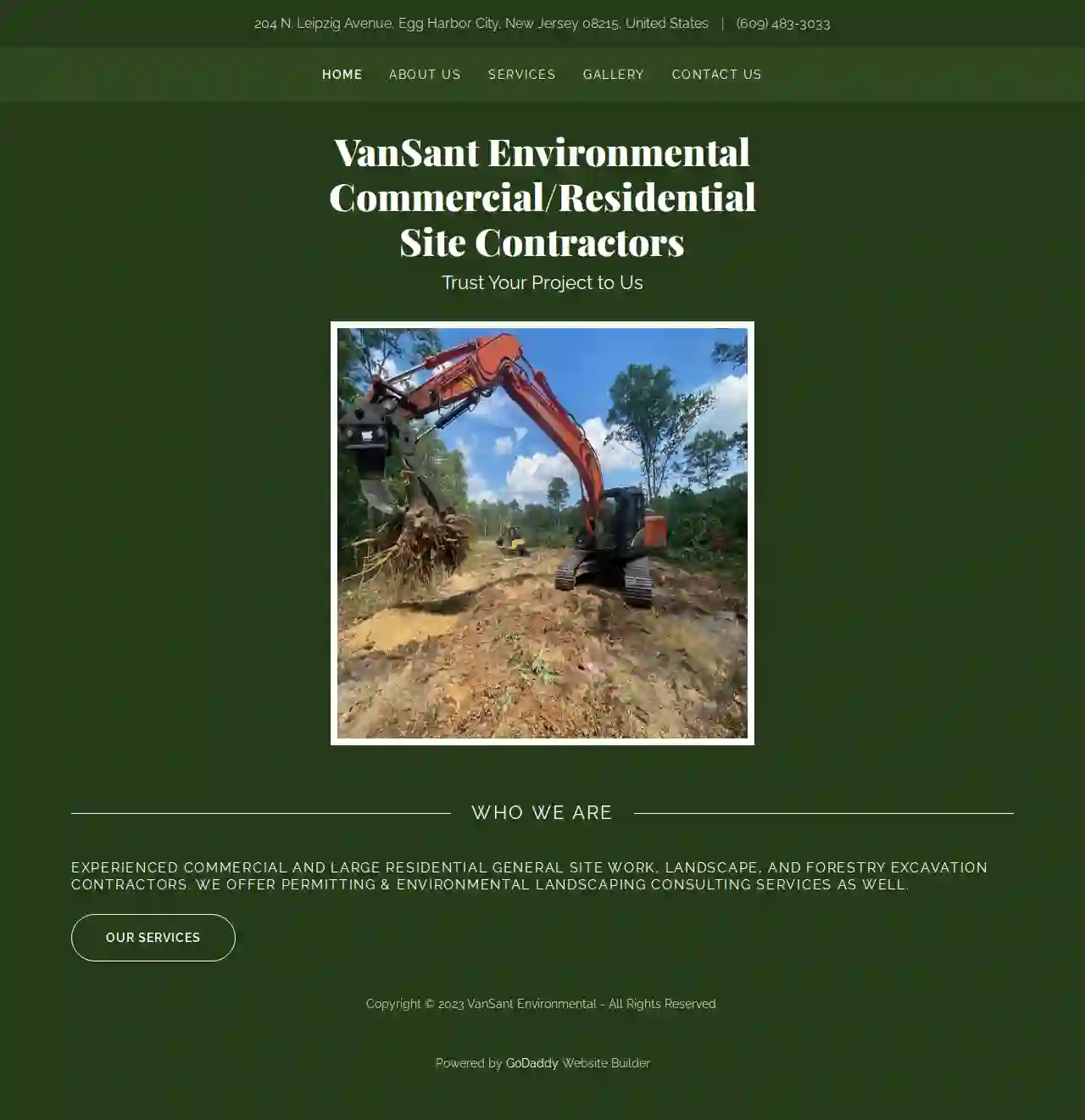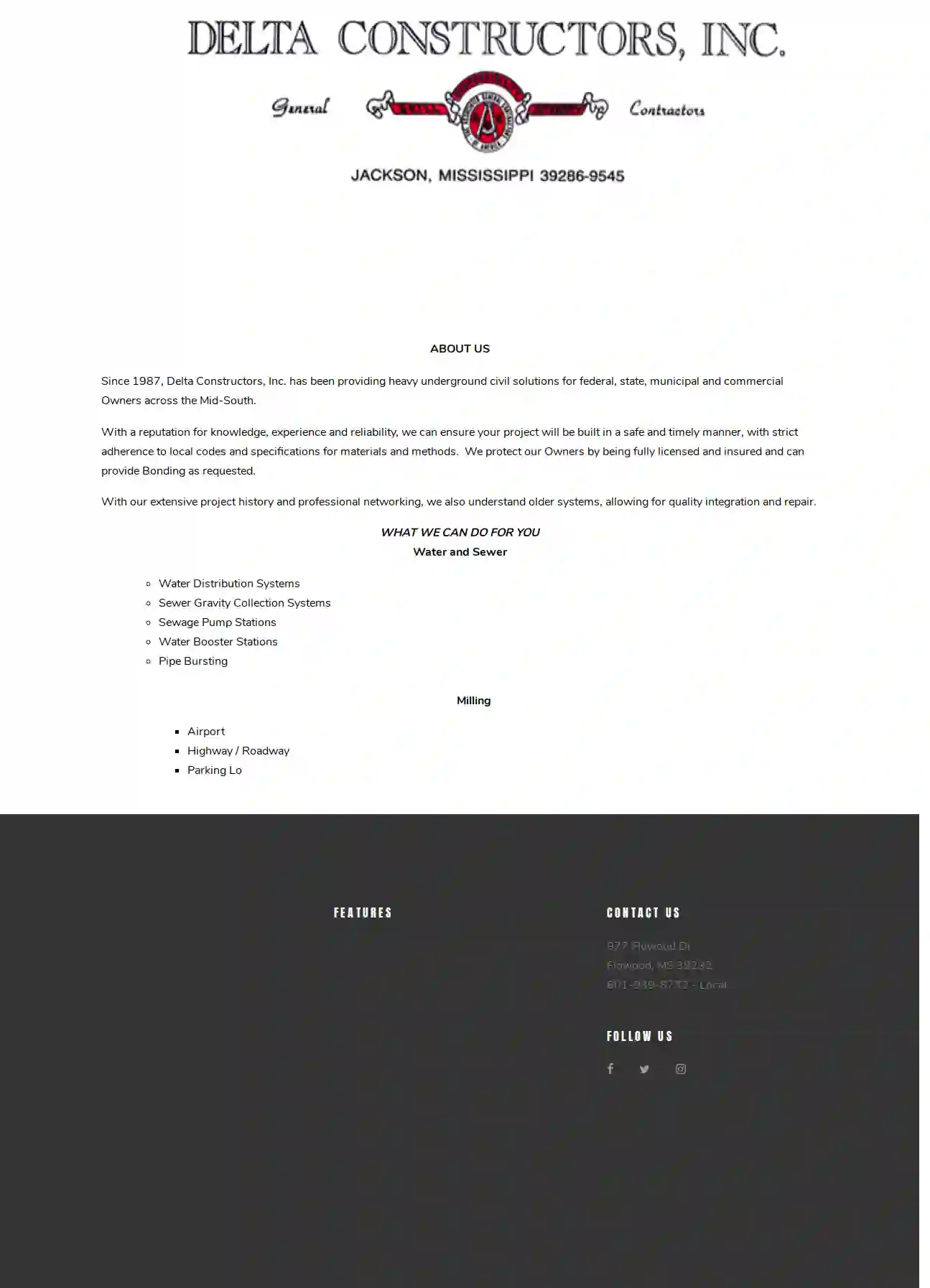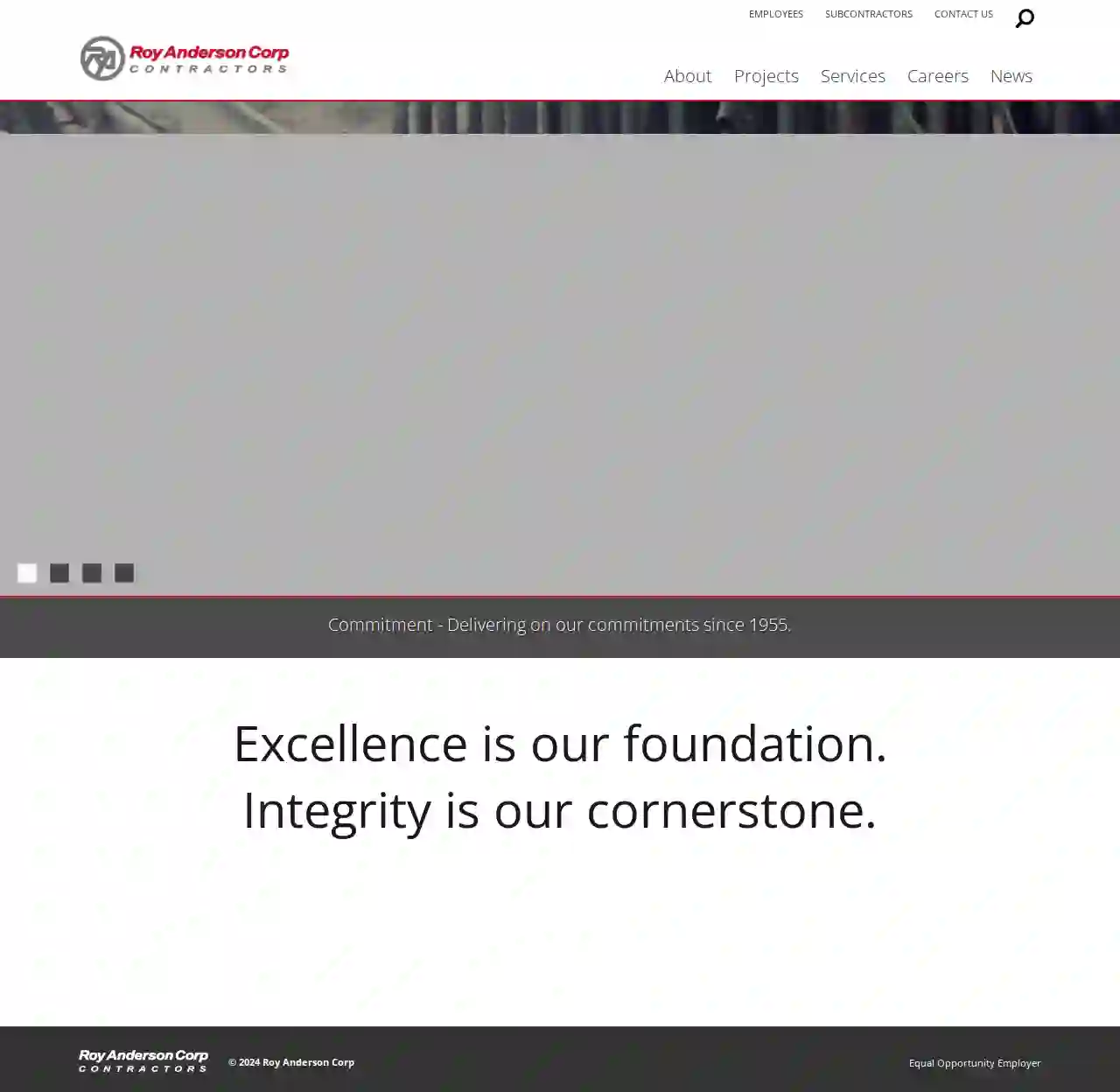Demolition Contractors Chesterfield
Find Demo Contractor in Chesterfield
Receive up to 3 Demolition Experts quotes for your project today! Compare profiles, reviews, accreditations, portfolio, etc... and choose the best deal.

Short Excavating Inc.
54 reviews100 Short Line, Stratford, N0L 1N0, USAbout Short Excavating Short Excavating is a family-owned and operated business with over 20 years of experience in the excavating industry. We are committed to providing our clients with high-quality services at competitive prices. We are fully licensed and insured, and we have a team of experienced and qualified professionals who are dedicated to exceeding your expectations. We offer a wide range of excavating services, including: Site preparation Grading Demolition Foundation work Utility installation And more! We are committed to providing our clients with the highest level of customer service. We are always available to answer your questions and address your concerns. We are also committed to working with you to ensure that your project is completed on time and within budget. Contact us today for a free estimate!
- Services
- Why Us?
Get Quote
VanSant Environmental Landscaping & Site Work
51 reviews204 North Leipzig Avenue, Galloway, 08215, USWho We Are Experienced Commercial and LARGE Residential General Site work, Landscape, and Forestry EXCAVATION Contractors. We offer permitting & environmental landscaping consulting services as well. Our Team Barry VanSant Barry is the owner and the company's Horticulturist and Landscape Designer/Consultant. He has over 45 years experience in multiple areas of the industry. Samuel VanSant Sam is the company's Project and Construction Manager. He oversees the day-to-day operations and all heavy equipment operations. Adam Wolff Adam is our field engineer. He is a graduate of East Carolina University in construction management and LEED Certified. Frequently Asked Questions Are you insured and licensed? We have all necessary licenses for our area, and we carry insurance for all of our projects. What kind of landscaping do you do? Our specialty is in natural and native plant material and methods that fit the ecology of our area. We proudly support and volunteer for: Team Rubicon USA Volunteer Partner Since Oct. 2016 Habitat For Humanity Volunteer Partner Since Oct. 2016 U.S. Fish and Wildlife Services Volunteer Partner Since Dec. 2018
- Services
- Why Us?
- Our Team
- Gallery
Get Quote
Delta Constructors, Inc.
4.610 reviews977 Flowood Dr, Flowood, 39232, USAbout Delta Constructors, Inc. Since 1987, Delta Constructors, Inc. has been providing heavy underground civil solutions for federal, state, municipal and commercial Owners across the Mid-South. With a reputation for knowledge, experience and reliability, we can ensure your project will be built in a safe and timely manner, with strict adherence to local codes and specifications for materials and methods. We protect our Owners by being fully licensed and insured and can provide Bonding as requested. With our extensive project history and professional networking, we also understand older systems, allowing for quality integration and repair.
- Services
- Why Us?
- Gallery
Get Quote
In Earth Excavating & Contracting, Inc
4.36 reviewsWoodbridge, USIn Earth Excavating & Contracting, Inc. In Earth Excavating & Contracting, Inc. is a woman-owned business that is insured, licensed, and certified by the NJDEP. We are also OSHA trained and Roth-certified installers. We specialize in tank installations and tank removal services, as well as tank locating and much more! We offer start-to-finish solutions for every project and also many other services. We also work in collaboration with Frey Engineering for Septic Systems, Geotechnical and Environmental Services. Check out samples of our recent work on our Facebook page, and you'll agree that we're the best choice. Quality Excavation and Contracting Guaranteed: +1.908.246.6891
- Services
- Why Us?
- Our Team
- Testimonials
- Gallery
Get Quote
Custom Sheds Plus
52 reviews3008 Lower Huntington Road, Fort Wayne, 46809, USCUSTOM SHEDS PLUS She Shed, Tiny Home, Mancave, Lake Shed, Cigar/Bar Shed, Garden Shed, Tool Shed, Storage Shed, you dream it we can make it. Create your custom shed with us and turn your dream a reality! Call us to create your very own She Shed, Mancave, Lake Shed, Cigar/Bar Shed, Garden Shed, or Tool Shed! We build custom storage barns, play houses, or anything you can think of. You create it, we will build it! We also have pre-made inventory at 3 different lot locations that you can visit. Our goal is to provide a structure that exceeds your expectations!
- Services
- Why Us?
- Gallery
Get Quote
SJ Hauck Construction
4.882 reviewsAtlantic City, USSafer Structures Streamlined Solutions Whether you're starting a new commercial project or are getting ready to build a new house, if you have an existing structure or house on your property that needs to be removed, we are ready! Let the professionals at SJ Hauck Construction get your land ready for building again! Deep foundations are essential for ensuring the stability and safety of structures, especially in areas with challenging soil conditions or where the structure needs to resist high loads or seismic forces. Proper design and construction of deep foundations are crucial to the long-term performance and integrity of the built environment. Support of Excavation (SOE) is a crucial aspect of construction projects that involve digging below ground level. SOE systems are temporary earth-retaining structures designed to control soil movement and prevent cave-ins, ensuring the safety and stability of excavation sites.
- Services
- Why Us?
- Gallery
Get Quote
Mississippi 811, Inc.
4.823 reviews200 Country Pl Pkwy, Pearl, 39208, USAbout MS811 MS811 is a vital resource for anyone planning to dig in Mississippi. Our mission is to protect underground infrastructure and ensure the safety of excavators, homeowners, and the public. We provide a free, easy-to-use service that helps you locate underground utilities before you dig. By calling 811 or visiting our website, you can request a locate request and ensure that you are digging safely. We are committed to providing our customers with the highest level of service and support. Our team of experts is available 24/7 to answer your questions and help you navigate the process of digging safely. We also offer a variety of resources and information to help you understand the importance of damage prevention and the laws and regulations that govern excavation in Mississippi. We believe that everyone has a role to play in protecting underground infrastructure. By working together, we can prevent damage to utilities and ensure the safety of our communities.
- Services
- Why Us?
- Gallery
Get Quote
Blackwater Draw Locality 1
4.556 reviews1500 S. Ave K, Lea Hall Room 163, Portales, 88130, USThe Blackwater Draw Museum seeks to foster preservation and education of the heritage of New Mexico, the Southern High Plains, and the greater Southwest through exhibitions, educational programs, collections, and research, while enriching and supporting the educational goals and mission of ENMU. The Blackwater Draw Museum is a small museum located on the campus of Eastern New Mexico University in Portales, New Mexico. The museum is home to a collection of artifacts from the Blackwater Draw National Historic Landmark, a site that has been inhabited by humans for over 13,500 years. The museum offers a variety of exhibits, educational programs, and research opportunities. Visitors can learn about the history of the Blackwater Draw site, the cultures that have lived there, and the archaeology of the region. The museum also has a collection of artifacts from the Casas Grandes culture, a prehistoric culture that flourished in the Southwest from about 1300 to 1450 AD. The museum is open to the public and offers a variety of tours and programs. The museum is a great place to learn about the history and culture of the Southwest. The Blackwater Draw Museum is a great place to learn about the history and culture of the Southwest. The museum offers a variety of exhibits, educational programs, and research opportunities. Visitors can learn about the history of the Blackwater Draw site, the cultures that have lived there, and the archaeology of the region. The museum also has a collection of artifacts from the Casas Grandes culture, a prehistoric culture that flourished in the Southwest from about 1300 to 1450 AD. The museum is open to the public and offers a variety of tours and programs.
- Services
- Why Us?
- Gallery
Get Quote
Roy Anderson Corp
4.128 reviews11400 Reichold Road, Gulfport, 39503, USAbout Roy Anderson Corp Roy Anderson Corp is an innovative construction company with unique strengths, committed to delivering unsurpassed customer service and performance to customers, creating exciting opportunities for associates and bound together by shared core beliefs of safety, quality and integrity. Since 1955 Roy Anderson Corp has delivered exceptional construction services including Preconstruction, Design-Build, General Contracting and Construction Management. We are a wholly owned subsidiary of Tutor Perini Corporation (NYSE: TPC) who is consistently ranked among the top builders in the United States by Engineering News Record.
- Services
- Why Us?
- Gallery
Get Quote
Jordan Construction, Inc.
539 reviewsPO Box 6242, Vancleave, 39565, USThe Dream Can Be Yours Inground pools are the height of luxury for any homeowner. Adding increased buyer appeal and fun for residents, spas and swimming pools are great features for any client to consider. Just imagine this. Hearing the tranquil sound of water just beyond your door and seeing the gleam of crystal waters in your very own pool? Sound appealing? The dream can be yours. As a licensed construction company, Jordan Construction specializes in installing luxurious swimming pools and spas second to none. Partnered with providers that include Thursday Pools and Imagine Pools, we work hard to transform your outdoor living space into an exotic oasis complete with concrete patio surrounds and an inground pool that will be the envy of the neighborhood! Seeking to incorporate other outdoor enhancements for your home? We can help with driveways, patios, custom decks and much more! Have you always longed for a pool? Part of the benefit of choosing Jordan Construction, Inc. is that we bring years of experience to the field. Through our countless projects we've taken on, we've cultivated our craft to the highest level of precision. We understand that when you hire our team to install a pool, you are seeking a luxurious result and that's exactly what we deliver. Don't believe us? Just take a look at our reviews from happy clients. Our goal is to not only meet your expectations, but exceed them! What Customers Are Saying... Very highly recommend Jordan Construction! If you are considering installing a pool, you will not find better on the coast than Eddie! He and Kelly will explain every step, cover all the options and ensure you are comfortable with the process. We didn't pay a dollar more than expected, and they were done in exactly 2 weeks as planned. Eddie and his crew are thoughtful, careful and quick! Now we just need some warm weather to heat up our awesome new pool!! -Jennifer Johnson Williams More than pools As we've stated before, we're a full-service construction company that offers more than pool installation. Our custom concrete services entail not only laying grounds for pool installs but we also lay driveways, patios, and even home foundations. Need a new deck? We're on it! Our Office is your Backyard If you live in... MISSISSIPPI: Vancleave, Bay Saint Louis, Biloxi, Diamondhead, D'Iberville, Gautier, Gulfport, Hattiesburg, Long Beach, Moss Point, Ocean Springs, Pascagoula, Wiggins & Picayune
- Services
- Why Us?
- Testimonials
- Gallery
Get Quote
Over 22,076+ Excavation Pros on our directory
Our excavation contractors operate in Chesterfield and beyond!
ExcavationHQ has curated and vetted the Best Excavation Companies near Chesterfield. Find a reliable business today.
Frequently Asked Questions About Demolition Contractors
- Clear the Site: Remove all furniture, appliances, personal belongings, and any valuable items from the structure.
- Secure the Perimeter: Fence off the demolition area to prevent unauthorized access and protect surrounding property.
- Disconnect Utilities: Arrange for the disconnection of electricity, gas, water, and other utilities servicing the building.
- Hazardous Material Abatement: If asbestos, lead paint, or other hazardous materials are present, have them professionally removed before demolition begins.
- Notify Neighbors: Inform your neighbors about the demolition schedule to minimize disruptions and address any concerns.
- Obtain Permits: Ensure all necessary demolition permits are in place before starting work.
- Size and Type of Structure: The method should be suitable for the structure's size, height, and construction materials.
- Site Location and Accessibility: The method should be feasible given the site's location, surrounding buildings, and access constraints.
- Environmental Considerations: Prioritize methods that minimize environmental impact, such as deconstruction or selective demolition if feasible.
- Budget: Different demolition methods have varying costs, so choose one that fits your budget.
- Safety: Prioritize methods that ensure worker safety and minimize risks to surrounding areas.
- Experience: Look for companies with a proven track record and years of experience in the demolition industry.
- Licensing and Insurance: Ensure the contractor is properly licensed to operate in your area and carries adequate insurance to protect you from liability.
- Safety Record: Inquire about their safety protocols and accident history. A reputable contractor prioritizes safety.
- References and Reviews: Ask for references from past clients and check online reviews to gauge their reputation and customer satisfaction.
- Professionalism: Choose a company that communicates clearly, provides detailed estimates, and has a courteous and responsive team.
- Size and Complexity of the Structure: Larger and more complex structures, such as multi-story buildings, require more time, labor, and specialized equipment, increasing costs.
- Type of Demolition: Different demolition methods, such as implosion, wrecking ball, or high-reach demolition, have varying costs.
- Material Disposal: Disposal fees for demolition debris can contribute significantly to the overall cost, depending on the type and quantity of materials.
- Location and Accessibility: Demolition in densely populated areas or with limited access may require more planning and specialized equipment, affecting costs.
- Hazardous Materials: The presence of asbestos, lead paint, or other hazardous materials requires specialized removal and disposal procedures, adding to the expenses.
How do I prepare my property for demolition?
How do I choose the right demolition method for my project?
How do I find a reputable demolition contractor?
How much does demolition cost in the USA?
How do I prepare my property for demolition?
- Clear the Site: Remove all furniture, appliances, personal belongings, and any valuable items from the structure.
- Secure the Perimeter: Fence off the demolition area to prevent unauthorized access and protect surrounding property.
- Disconnect Utilities: Arrange for the disconnection of electricity, gas, water, and other utilities servicing the building.
- Hazardous Material Abatement: If asbestos, lead paint, or other hazardous materials are present, have them professionally removed before demolition begins.
- Notify Neighbors: Inform your neighbors about the demolition schedule to minimize disruptions and address any concerns.
- Obtain Permits: Ensure all necessary demolition permits are in place before starting work.
How do I choose the right demolition method for my project?
- Size and Type of Structure: The method should be suitable for the structure's size, height, and construction materials.
- Site Location and Accessibility: The method should be feasible given the site's location, surrounding buildings, and access constraints.
- Environmental Considerations: Prioritize methods that minimize environmental impact, such as deconstruction or selective demolition if feasible.
- Budget: Different demolition methods have varying costs, so choose one that fits your budget.
- Safety: Prioritize methods that ensure worker safety and minimize risks to surrounding areas.
How do I find a reputable demolition contractor?
- Experience: Look for companies with a proven track record and years of experience in the demolition industry.
- Licensing and Insurance: Ensure the contractor is properly licensed to operate in your area and carries adequate insurance to protect you from liability.
- Safety Record: Inquire about their safety protocols and accident history. A reputable contractor prioritizes safety.
- References and Reviews: Ask for references from past clients and check online reviews to gauge their reputation and customer satisfaction.
- Professionalism: Choose a company that communicates clearly, provides detailed estimates, and has a courteous and responsive team.
How much does demolition cost in the USA?
- Size and Complexity of the Structure: Larger and more complex structures, such as multi-story buildings, require more time, labor, and specialized equipment, increasing costs.
- Type of Demolition: Different demolition methods, such as implosion, wrecking ball, or high-reach demolition, have varying costs.
- Material Disposal: Disposal fees for demolition debris can contribute significantly to the overall cost, depending on the type and quantity of materials.
- Location and Accessibility: Demolition in densely populated areas or with limited access may require more planning and specialized equipment, affecting costs.
- Hazardous Materials: The presence of asbestos, lead paint, or other hazardous materials requires specialized removal and disposal procedures, adding to the expenses.